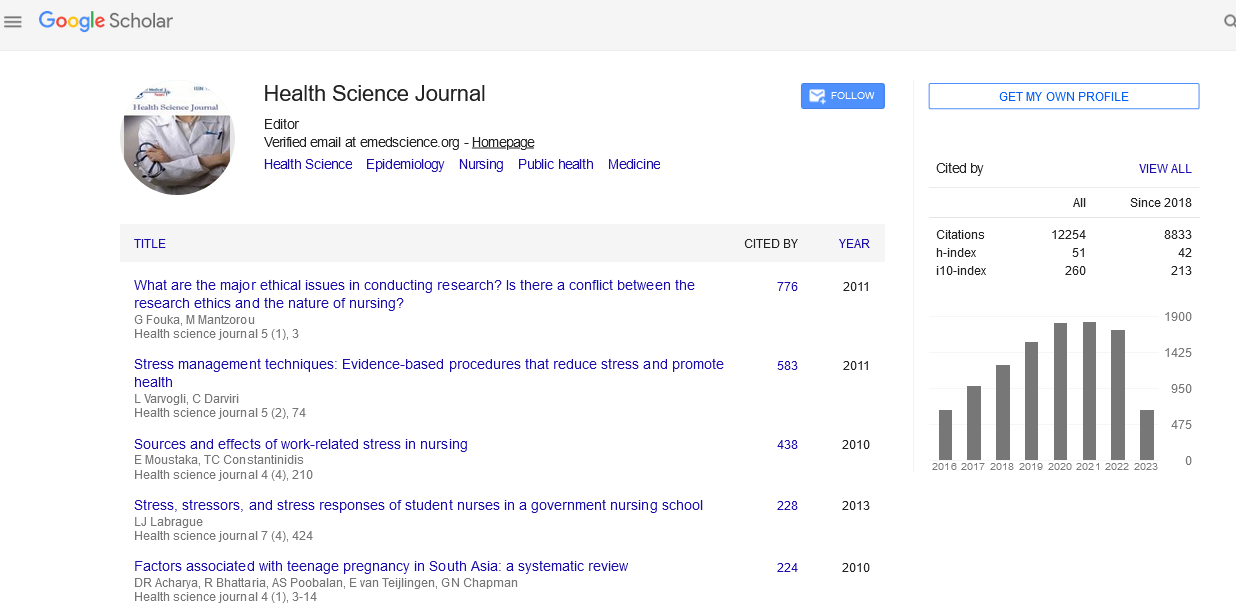Editorial - (2024) Volume 18, Issue 12
Mental Health Implications of Urban Green Spaces
Yukiko Matsuzawa*
Department of Health, University of Toronto, Canada
*Correspondence:
Yukiko Matsuzawa, Department of Health, University of Toronto,
Canada,
Email:
Received: 01-Dec-2024, Manuscript No. Iphsj-24-15450;
Editor assigned: 04-Dec-2024, Pre QC No. Iphsj-24-15450 (PQ);
Reviewed: 26-Dec-2024, QC No. Iphsj-24-15450;
Revised: 28-Dec-2024, Manuscript No. Iphsj-24-15450 (R);
Published:
31-Dec-2024, DOI: 10.36648/1791-809X.18.12.1211
Abstract
Urban green spaces, such as parks, gardens, and green corridors, are increasingly recognized for their positive impact on the physical and mental well-being of city dwellers. As urbanization accelerates, the demand for natural spaces within cities grows, with a focus on their potential to mitigate the negative mental health effects of urban living. This article explores the mental health implications of urban green spaces, examining how access to nature can reduce stress, anxiety, and depression while promoting cognitive function, social interaction, and overall well-being. The review highlights the physiological and psychological mechanisms behind these benefits, discusses the role of urban design in fostering mental health, and addresses the challenges and disparities in access to green spaces across different urban populations. Finally, it emphasizes the importance of integrating green spaces into urban planning and policy to enhance public mental health in rapidly growing cities.
Introduction
In today’s rapidly urbanizing world [1], mental health has become a critical concern. Urban environments, characterized by noise, pollution, overcrowding, and limited access to nature, have been linked to increased stress, anxiety, depression, and other mental health disorders. At the same time, there is a growing body of evidence suggesting that exposure to natural environments, particularly urban green spaces, can have a positive impact on mental health and well-being [2]. These spaces, which include parks, gardens, tree-lined streets, and green rooftops, offer opportunities for relaxation, recreation, and social interaction in otherwise bustling urban settings. Urban green spaces are essential not only for environmental sustainability but also for the mental health of urban residents. As cities continue to grow and expand, the role of green spaces in supporting mental well-being becomes increasingly important. This article delves into the mental health benefits of urban green spaces, highlighting how they contribute to reducing the adverse effects of urban stressors and promoting overall psychological resilience. By understanding the mechanisms through which nature influences mental health, urban planners and policymakers can create more livable cities that foster the well-being of their residents [3].
Psychological Benefits of Urban Green Spaces
Urban green spaces provide several psychological benefits, primarily through their ability to reduce stress, promote relaxation, and improve mood. One of the most widely recognized mental health benefits of nature is its ability to lower levels of stress. Research has shown that exposure to natural environments can lead to reductions in cortisol, a stress hormone [4], and enhance the parasympathetic nervous system, which helps the body relax and recover from stress. Spending time in green spaces has been associated with decreased heart rate, lower blood pressure, and a general sense of calm. Nature also provides a restorative environment that helps individuals recover from mental fatigue. This is particularly important in urban settings where people are constantly exposed to stimuli such as traffic noise, social stressors, and the pressures of daily life. Studies have shown that people who spend time in green spaces experience improvements in cognitive function, including better attention, memory, and problem-solving abilities. These restorative effects are thought to be due to the calming and soothing nature of natural environments, which help individuals mentally recharge and regain focus. Furthermore, urban green spaces play a crucial role in mood regulation. Research has indicated that spending time in nature can significantly improve mood, reduce symptoms of depression, and promote feelings of happiness and well-being [5]. The presence of green spaces provides a refuge from the overwhelming sensory inputs of the urban environment, offering individuals a space where they can experience tranquility, reflection, and connection with the natural world. This can help combat feelings of frustration, hopelessness, or anxiety, which are often heightened in city life.
Social Interaction and Community Well-being
In addition to individual psychological benefits [6], urban green spaces also promote social interaction and community cohesion. These spaces often serve as gathering points for people to meet, interact, and engage in communal activities. Whether it is through informal socializing, group exercise classes, or family gatherings, green spaces foster a sense of community and belonging, which is vital for mental health. Social support and social networks are key factors in mental well-being. People who have strong social ties are less likely to experience mental health issues such as depression and anxiety. Urban green spaces offer an opportunity for individuals to connect with others in a non-stressful environment, which can reduce feelings of loneliness and isolation—common problems in densely populated urban areas [7]. These spaces can also provide opportunities for different cultural or socioeconomic groups to interact, promoting social inclusion and reducing tensions between communities. Furthermore, green spaces can serve as platforms for organized community activities such as fitness classes, environmental education programs, and neighborhood events. These activities help create a sense of shared purpose and collective responsibility, contributing to a positive community atmosphere. The sense of safety and support provided by green spaces can help individuals feel more confident in navigating their urban environment, leading to greater psychological resilience [8].
Physical Activity and Mental Health
Physical activity is another key factor linking urban green spaces to mental health. Access to green spaces encourages outdoor physical activity, which is well-documented for its positive effects on mental well-being. Exercise helps to release endorphins, which are natural mood enhancers, and it has been shown to reduce symptoms of depression, anxiety, and stress. Green spaces provide a low-cost and accessible environment for activities such as walking, jogging, cycling, yoga, or team sports. The mental health benefits of physical activity in green spaces go beyond the mere act of exercise [9]. Nature itself has a calming and uplifting effect, making physical activity in these environments even more beneficial. Studies have shown that people are more likely to engage in physical activity when it takes place in a natural setting, compared to urban spaces with less greenery. Regular physical activity in green spaces has been associated with improved sleep, reduced fatigue, better mood, and lower levels of anxiety, all of which contribute to enhanced mental health. Moreover, physical activity in nature can provide a sense of accomplishment and mastery, which can improve self-esteem and promote a positive outlook on life. These benefits are particularly important in urban areas, where sedentary lifestyles and mental health challenges are prevalent [10].
Urban Design and Access to Green Spaces
While the mental health benefits of urban green spaces are well-established, access to these spaces is not equal across all urban populations. In many cities, low-income neighborhoods and marginalized communities have limited access to green spaces, exacerbating health disparities. Factors such as inadequate urban planning, limited funding for parks and recreational areas, and gentrification can result in unequal distribution of green spaces, leaving some residents without easy access to nature. The quality and design of urban green spaces also play a critical role in their effectiveness in promoting mental health. Well-designed parks and green areas with features such as walking paths, seating, open spaces, and biodiversity are more likely to attract people and provide the mental health benefits associated with nature. Conversely, poorly designed or neglected green spaces may fail to provide the restorative effects that people seek and may even contribute to feelings of insecurity or anxiety. Addressing disparities in access to green spaces is essential for promoting mental health equity. Policymakers and urban planners need to prioritize the creation and maintenance of high-quality green spaces in all urban areas, particularly those with vulnerable populations. Ensuring that green spaces are easily accessible, safe, and welcoming to all residents is critical for fostering a mentally healthy urban environment.
Challenges and Future Directions
Despite the growing recognition of the mental health benefits of urban green spaces, there are several challenges to maximizing their potential. Urban development continues to prioritize economic growth and infrastructure over the creation of public green spaces, leading to a loss of natural areas in cities. Additionally, there is often a lack of research on the long-term effects of green space interventions on mental health, which can hinder the implementation of evidence-based policies and programs. Moreover, climate change poses a significant threat to urban green spaces, with increased temperatures, flooding, and extreme weather events potentially damaging existing parks and gardens. The preservation and expansion of green spaces will require innovative solutions that integrate environmental sustainability with urban mental health initiatives. Future research should focus on understanding the specific mechanisms through which green spaces influence mental health, such as the role of biodiversity, exposure to natural elements, and the social and cultural factors that shape people's interactions with green environments. Additionally, interdisciplinary approaches involving urban planning, psychology, and public health can lead to more effective strategies for integrating green spaces into urban design.
Conclusion
Urban green spaces are a valuable asset for improving mental health in cities. They provide a variety of psychological, social, and physical benefits, including stress reduction, mood enhancement, cognitive restoration, and opportunities for social interaction. Access to well-designed green spaces promotes physical activity, social cohesion, and overall well-being. However, challenges remain in ensuring equitable access to these spaces, particularly for marginalized communities. By prioritizing the creation and maintenance of green spaces in urban areas, cities can foster healthier environments that promote the mental well-being of all residents. Integrating green spaces into urban planning and policy is essential for building resilient cities capable of supporting the mental health needs of their populations.
References
- Mu L, Sanders I (2010) Human tongue neuro anatomy: Nerve supply and motor endplates. Clinical Anatomy 23: 777-791.
Google Scholar, Crossref
- Nissimov JN, Chaudhuri AB (2014) Hair curvature a natural dialectic and review. Biological Reviews 89: 723-766.
Crossref
- Odokuma EI, Eghworo O, Avwioro G, Agbedia U (2008) Tongue Rolling and Tongue Folding Traits in an African Population. Int J Morphology 26: 533-535.
Google Scholar, Crossref
- Previc FH (1996) No right‐handedness, central nervous system and related pathology, and its lateralization: A reformulation and synthesis. Dev Neur 12: 443-515.
Indexed at, Google Scholar, Crossref
- James V, Corino G, Robertson T, Dutton N, Halas D et al. (2005) Early diagnosis of breast cancer by hair diffraction. Int J Cancer 114: 969-972.
Google Scholar, Crossref
- Kappert KD, Dijk S, Wellenstein D, Alphe MJ, Son RJ, et al. (2021) Five Specific Tongue Movements in a Healthy Population. Dysphagia, 36: 736-742.
Indexed at, Google Scholar, Crossref
- Krishan K, Kanchan T, Thakur SA study of morphological variations of the human ear for its applications in personal identification.
Indexed at, Crossref
- Kyriakou G, Glentis A, Papanikolaou S (2021) Widow’s peak a usually overlooked, yet significant morphogenetic trait. JDDG J German Soc Derma 19: 1271-1275.
Indexed at, Google Scholar, Crossref
- Lane RD, Caruso AC, Brown VL, Axelrod B, Schwartz GE, et al. (1994) Effects of non-right-handedness on risk for sudden death associated with coronary artery disease. American J Card 74: 743-747.
Indexed at, Google Scholar, Crossref
- Manning JT, Scutt D, Wilson J, Lewis-Jones DI (1998) the ratio of 2nd to 4th digit length: a predictor of sperm numbers and concentrations of testosterone, luteinizing hormone and oestrogen. Human Reproduction 13: 3000-3004.
Indexed at, Google Scholar, Crossref
Citation: Matsuzawa Y (2024) Impacts of Environmental Noise on Mental Health in Urban Settings. Health Sci J. Vol. 18 No. 12: 1211.





